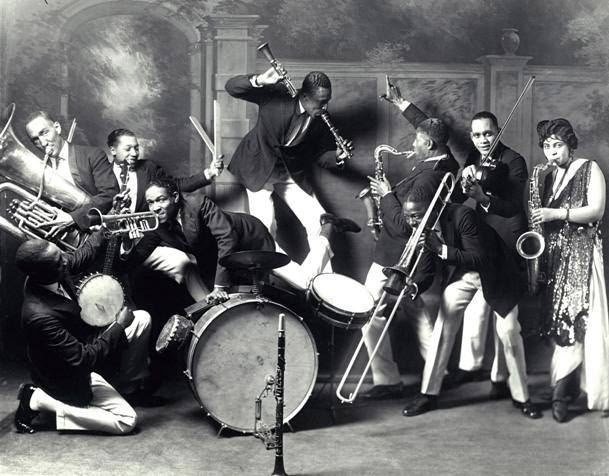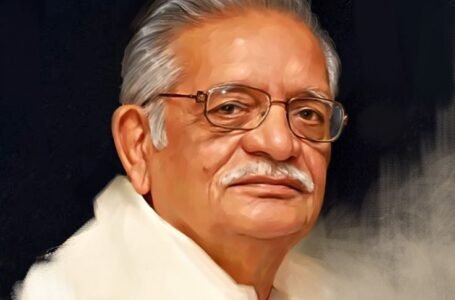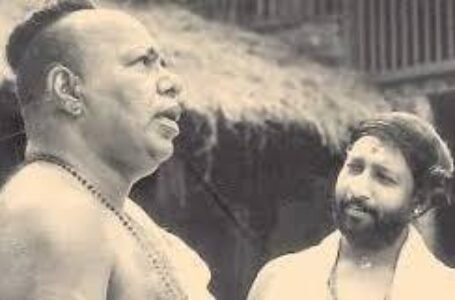The Impact of Jazz on 20th-Century Culture: Music as a Form of Social Change
- American history African history Modern history
 Tanishka Sarang
Tanishka Sarang- February 24, 2025
- 0
- 16

Few musical genres have had as profound an impact on society as jazz. Emerging in the early 20th century from African American communities in New Orleans, jazz became much more than just a style of music—it was a force for social change. Throughout the 20th century, jazz challenged racial segregation, redefined artistic expression, and played a crucial role in political movements, from the Harlem Renaissance to the Civil Rights Movement.
This article explores how jazz shaped cultural identities, inspired social change, and became a voice for marginalized communities, leaving an enduring legacy in global music and culture.
The Birth of Jazz: A Fusion of Cultures
Jazz emerged in the early 1900s, deeply rooted in African American musical traditions, including blues, spirituals, and ragtime. New Orleans, a port city with a diverse population, served as the birthplace of jazz. The city’s blend of African, Caribbean, and European influences created an environment where musical experimentation flourished.
Early jazz was characterized by improvisation, syncopation, and call-and-response patterns—a reflection of African musical traditions. Musicians such as Buddy Bolden, King Oliver, and Jelly Roll Morton played a significant role in shaping jazz’s sound, combining blues rhythms with brass band music and ragtime piano styles.
New Orleans’ Storyville district, a lively area filled with saloons and music clubs, became a hub for jazz musicians. However, as the district was shut down in 1917, many musicians moved to cities like Chicago, New York, and Kansas City, spreading jazz across the country.
The Jazz Age and Social Transformation
The 1920s, often referred to as the “Jazz Age,” marked a period of immense cultural and social change. This era, shaped by the aftermath of World War I and the economic prosperity of the Roaring Twenties, saw jazz become the defining sound of modernity.
Jazz became synonymous with youthful rebellion and a break from traditional social norms. The rise of nightclubs and dance halls in major cities provided spaces where people of different racial and social backgrounds could come together, challenging the rigid segregation of American society.
Women, in particular, found jazz culture liberating. The “flapper” lifestyle—characterized by bobbed hair, shorter skirts, and a rejection of traditional gender roles—was deeply connected to the rise of jazz. Jazz music provided a soundtrack for this cultural revolution, empowering women to embrace new freedoms in dress, behaviour, and artistic expression.
Despite its popularity, jazz faced opposition from conservative groups who viewed it as immoral and corrupting. Critics linked jazz to vice, crime, and racial mixing, arguing that it represented the decline of traditional American values. However, such criticism only fuelled its rebellious appeal, cementing jazz as a symbol of resistance and cultural change.
Jazz as a Vehicle for Racial Integration
One of the most significant impacts of jazz was its role in breaking down racial barriers. In a segregated society, jazz offered a rare space for Black and white musicians to collaborate, challenging deeply ingrained racial prejudices.
Louis Armstrong, one of the most influential jazz musicians of all time, became a bridge between Black and white audiences. His virtuoso trumpet playing and charismatic stage presence helped bring jazz into the mainstream, making it one of the first truly integrated art forms in America.
Benny Goodman, known as the “King of Swing,” further pushed racial boundaries by hiring Black musicians such as Teddy Wilson and Lionel Hampton in his band. At a time when segregation was still enforced in many public spaces, Goodman’s integration of his orchestra was a radical statement, helping to pave the way for greater acceptance of Black artists in the music industry.
Jazz clubs and dance halls became some of the first places where racial integration occurred. Venues like the Cotton Club in Harlem showcased Black performers, though they often still catered to segregated white audiences. However, other clubs, such as Café Society, actively promoted integration and social equality, creating spaces where people of all races could enjoy music together.
Jazz and the Harlem Renaissance
The Harlem Renaissance, a cultural movement that flourished during the 1920s and early 1930s, saw jazz become a crucial element of African American identity and artistic expression. Harlem, a predominantly Black neighborhood in New York City, became a center for Black writers, artists, and musicians seeking to redefine their cultural identity.
Jazz was central to this movement, providing a musical language for expressing the joys, struggles, and complexities of Black life in America. Musicians like Duke Ellington, Bessie Smith, and Cab Calloway became stars of the Harlem jazz scene, performing at legendary venues such as the Apollo Theater and the Savoy Ballroom.
Writers such as Langston Hughes and Zora Neale Hurston frequently referenced jazz in their works, using its rhythms and improvisational style as a metaphor for the Black experience. Jazz, in many ways, became a form of resistance, allowing African Americans to assert their cultural identity and challenge stereotypes.
Jazz and the Civil Rights Movement
By the mid-20th century, jazz had evolved into a powerful voice for political activism. During the Civil Rights Movement of the 1950s and 1960s, jazz musicians used their music to protest racial injustice and promote social change.
Billie Holiday’s haunting song Strange Fruit (1939) was one of the earliest examples of jazz as a form of political protest. The song, which depicted the horrors of lynching in the American South, was so controversial that Holiday faced threats and harassment for performing it. Yet, it became one of the most powerful protest songs in American history.
John Coltrane’s Alabama (1963) was inspired by Martin Luther King Jr.’s speech following the 16th Street Baptist Church bombing, which killed four Black girls. The composition reflected both grief and resilience, using music as a means of expressing pain and hope.
Nina Simone, known for her deep involvement in civil rights activism, used jazz and soul music to address racial injustice. Her song Mississippi Goddam was a direct response to racial violence, criticising the slow pace of social progress in America.
Through their music, jazz artists helped shape the cultural and emotional landscape of the Civil Rights Movement, providing a soundtrack to the fight for equality.
The Global Influence of Jazz
While jazz began as an American art form, its influence quickly spread across the globe. By the mid-20th century, jazz had become an international phenomenon, influencing musicians from Europe, Africa, Latin America, and beyond.
In the Soviet Union, jazz became a form of resistance against government censorship. Despite official attempts to suppress it, Soviet musicians found ways to play jazz in underground clubs, using it as a symbol of artistic freedom.
In Africa, jazz blended with traditional rhythms to create new musical styles. South African jazz musicians, such as Hugh Masekela and Miriam Makeba, used the genre to protest apartheid, creating powerful anthems for social change.
Latin jazz, pioneered by artists like Dizzy Gillespie and Chano Pozo, fused Afro-Cuban rhythms with traditional jazz structures, leading to the rise of salsa, mambo, and other Latin American genres.
Jazz’s adaptability and openness to cultural influences allowed it to remain relevant and continually evolve, inspiring countless musicians and genres worldwide.
The Legacy of Jazz in the 21st Century
Today, jazz continues to shape contemporary music and culture. Hip-hop, R&B, rock, and electronic music all owe a debt to jazz’s improvisational spirit and rhythmic innovations. Jazz festivals, such as the Montreux Jazz Festival and the New Orleans Jazz & Heritage Festival, celebrate the genre’s rich history while showcasing emerging artists who push its boundaries. Educational programs in schools and universities ensure that jazz remains an essential part of music history and cultural studies.
More importantly, jazz continues to symbolize artistic freedom, resilience, and the power of music as a tool for social change. Its history serves as a reminder of how art can challenge oppression, inspire unity, and reflect the struggles and triumphs of humanity.
Conclusion
Jazz is more than a genre—it is a cultural revolution that shaped the 20th century. From its roots in African American communities to its role in civil rights activism and its global influence, jazz has been a driving force in social change. Through its improvisation, energy, and emotional depth, jazz continues to inspire artists and audiences, proving that music is one of the most powerful tools for transformation.
As we reflect on jazz’s legacy, we recognize its ability to break barriers, challenge injustice, and provide a voice for the voiceless. Its influence endures, reminding us that music is not just entertainment—it is a force for change.


